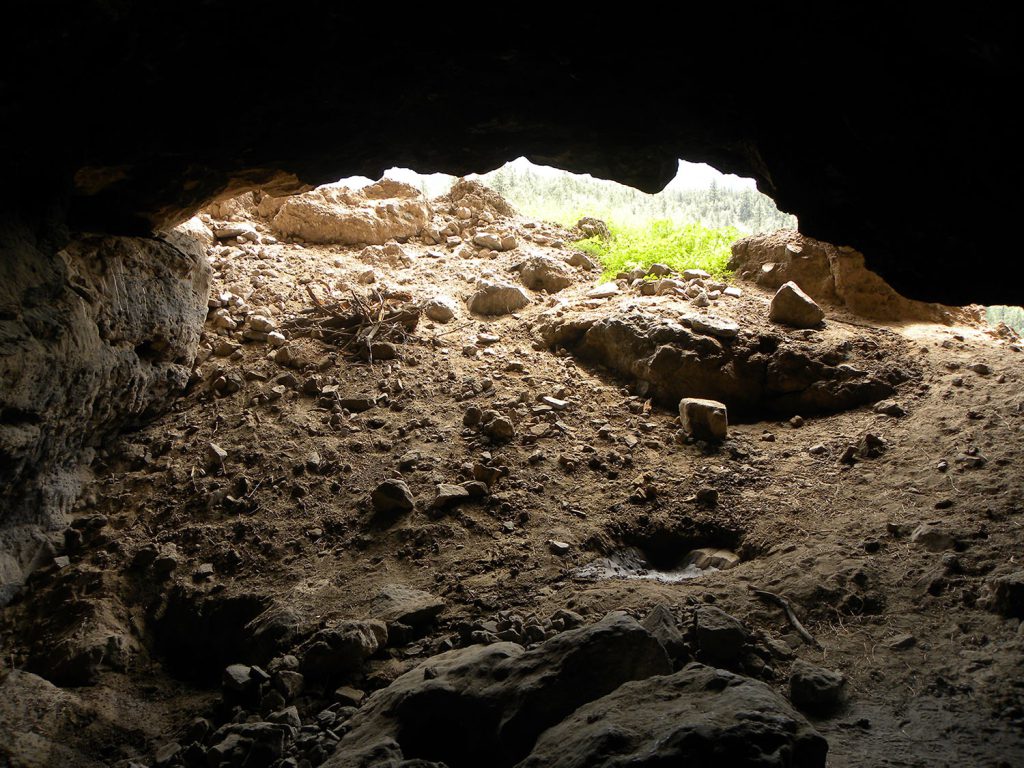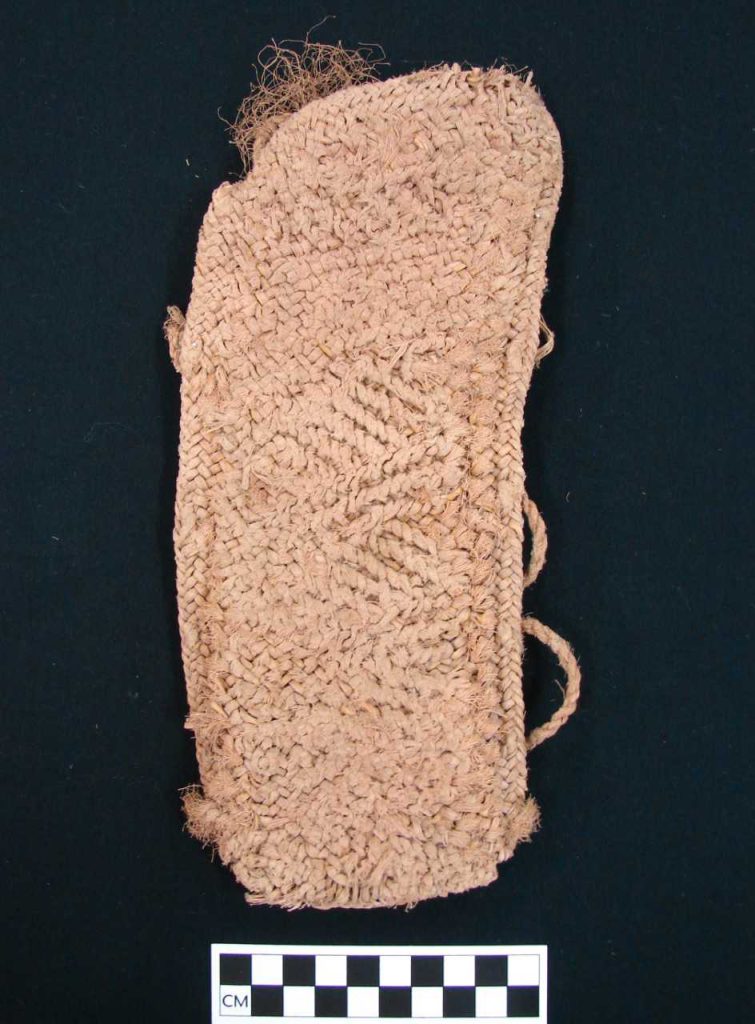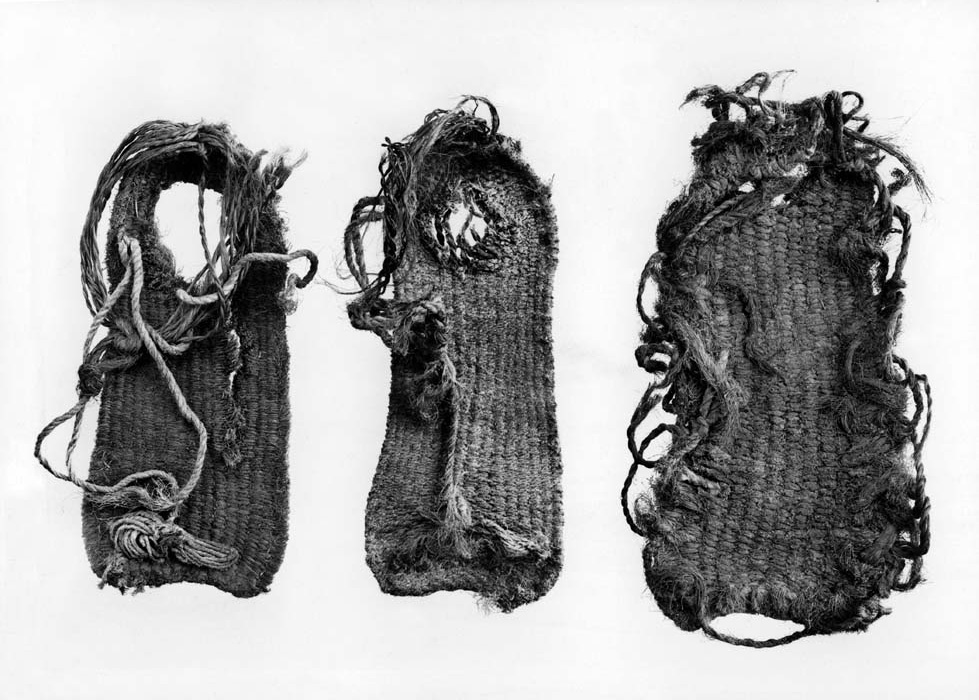Why Are Some Caves Full of Shoes?
I’ve spent a good chunk of my life hiking the U.S. Southwest, and I’ve kicked my share of sharp rocks and prickly cactuses as I’ve walked across hot sandy stretches of desert. My hiking boots usually provide adequate protection, but I’ve endured an abundance of cuts, burns, and punctures. So I’ve often wondered: What did people do to protect their feet 1,000 years ago? And that begs another question: Did ancient people need footwear, or were their feet so tough and weathered that they could go barefoot most of the time?
The answers lie in caves. Unlike stone tools and ceramic potsherds, footwear made of perishable materials, such as leather, fur, and plant fibers, is not well-preserved in open-air archaeological sites. But perpetually dry caves (those that are naturally cut off from groundwater sources and precipitation, and have little excess humidity) do a remarkable job of protecting perishable materials, and the Southwest has some great dry caves. My favorite is Tularosa Cave, near the small town of Aragon in west-central New Mexico, not far from where I conduct archaeological research today.
When archaeologists Paul Sidney Martin and John Beach Rinaldo of Chicago’s Field Museum excavated Tularosa Cave in 1950, it was the first such cave professionally excavated in the region. And it turned out to be one of the most productive—they recovered an astonishing array of objects. In addition to the standard set of pottery sherds, figurines, agricultural implements, and other stone and bone tools, they recovered 33,000 corn cobs (including some with the kernels still attached). They also found 1,700 pieces of cotton string, exquisite reed basket fragments, and yucca fiber knots, nets, and rope. And they recovered more than 200 sandals and moccasins, giving us a detailed look at Ancestral Puebloan footwear in that region from about A.D. 300 to A.D. 1200.
When I look at the Tularosa Cave sandals, I don’t see much protection for the foot, especially the toes. (Just the thought of a cactus tine in a toe makes me cringe at my keyboard.) But they do offer some protection for the soles of the feet, with interesting patterns woven into the sandal base. What strikes me most, though, is that they were beloved pairs of shoes: The sandals are often worn out at the heels. I have no idea how long it took for the heels to break down, but it’s clear that the sandals had been wearing out for a long time—the holes are usually quite large, such that the entire heel must have stuck out through the bottom.
As unusual as it may seem at first glance, Tularosa Cave is not, in fact, all that unusual when it comes to the large number of well-preserved sandals and moccasins found there. Dry caves in the American West are disproportionately full of such footwear and contain far fewer items of clothing. Ceremonial Cave near El Paso, Texas, yielded 1,200 sandals; a cave near Navajo Reservoir in northern New Mexico contained 1,000; the Promontory cave complex near the Great Salt Lake in Utah has numerous children’s moccasins.
Why do caves contain so many shoes? One could argue that it’s because sandals were made of yucca and other fibrous plants that preserve in dry caves, whereas clothes were made of cotton and hide, which don’t preserve as well. Although differential preservation may indeed have an impact on what we find, it can’t be the whole story—for we do find moccasins, which were made from hide. Based on the evidence, archaeologists think that clothing most likely wasn’t deposited in caves.
I asked Octavius Seowtewa, chair of the Zuni Cultural Resources Advisory Team, about the abundance and prevalence of sandals in caves. From his perspective, caves offer a point of connection between this world and the underworld. Sandals are a person’s individual point of connection to the earth. It therefore makes sense to discard sandals in caves.
That being said, other perishable materials have been found in these caves, including toy bows and arrows, bone tools, turkey carcasses, and more. We can only speculate about why these materials were left there; Seowtewa says that his ancestors left these materials “as evidence of our existence a long time ago.” Some items may have been ritually deposited, others might have been placed in caves for more mundane reasons. Caves are not pleasant places to live, so it seems to me more likely that materials were left in them for special reasons, not as a matter of everyday life. I believe the disproportionate amount of footwear found in caves is telling us something about what these people valued.
Ancient shoes not only protected the feet, they also sometimes acted as signaling devices. And given the level of investment in their manufacture, sandals and moccasins also may have served as style markers and status symbols, just as much footwear does today. How else do we explain today’s market for US$350 sneakers and US$1,000 pumps? Surely not improved performance or function.
Stylistic differences may have useful functional corollaries, however. Have you ever gone hiking and seen the footprint of a hiker who came before you? In all likelihood, you noticed a boot print that may be unique to a manufacturer—but not to the wearer. In ancient times, you may have been able to use a footprint to identify the specific wearer. One of the many surprising things about ancient sandals is that they often had unique designs on their soles. They served as identification cards!
Think about what that meant: You are living in an area that has relatively low population density; you probably know just about everyone in your region. One day, you are out gathering, hunting, or enjoying a hike. You see a sandal print with a particular design that you recognize as that of a friend—you’ve seen her make that pattern many times over the years. Because you know how to read signs and clues (e.g., bent or broken branches, trail markers, etc.) in the environment, you can make an informed decision about how recently your friend passed by. “She went that way yesterday, probably to gather the pinyon nuts that are now ripening,” you think. “I’ll give her a hand.” How cool is that?
Recently, I walked seven miles around Denver on paved streets. It was brutally hot, so I wore rubber-soled sandals without socks. It turns out that skipping the socks was a mistake, because the callous on one of my heels cracked and bled. I hobbled around for a few days thereafter, wearing socks to rehydrate and heal the callous. It’s embarrassing to admit that I’m such a tenderfoot.
My question remains: What did people do to protect their feet while living near Tularosa Cave 1,000 years ago? The answer is: not much. Their feet were indeed tougher than ours (and probably more mangled as a result). But as with all things human, the answer is more complicated than it appears at first glance. Shoes are not just functional items, they are iconic.
So the next time you put on your shoes, take time to remember that they’re doing a job far more important than protecting your feet and shuttling you from one task to another. They’re keeping you connected to Mother Earth, and they’re acting as symbols of your identity.



































